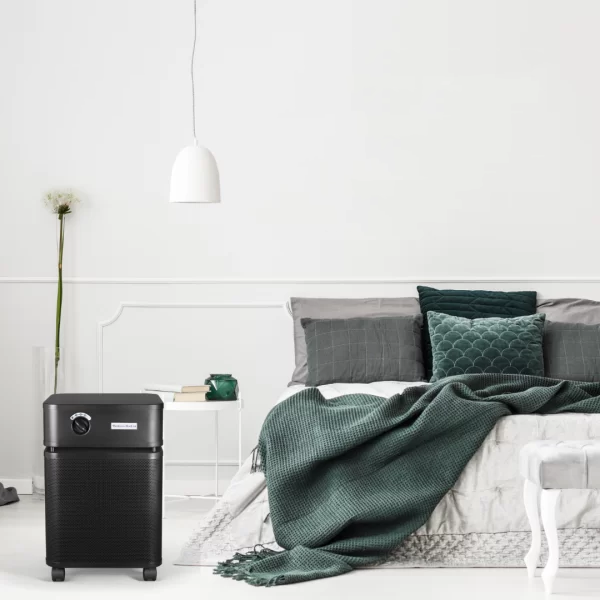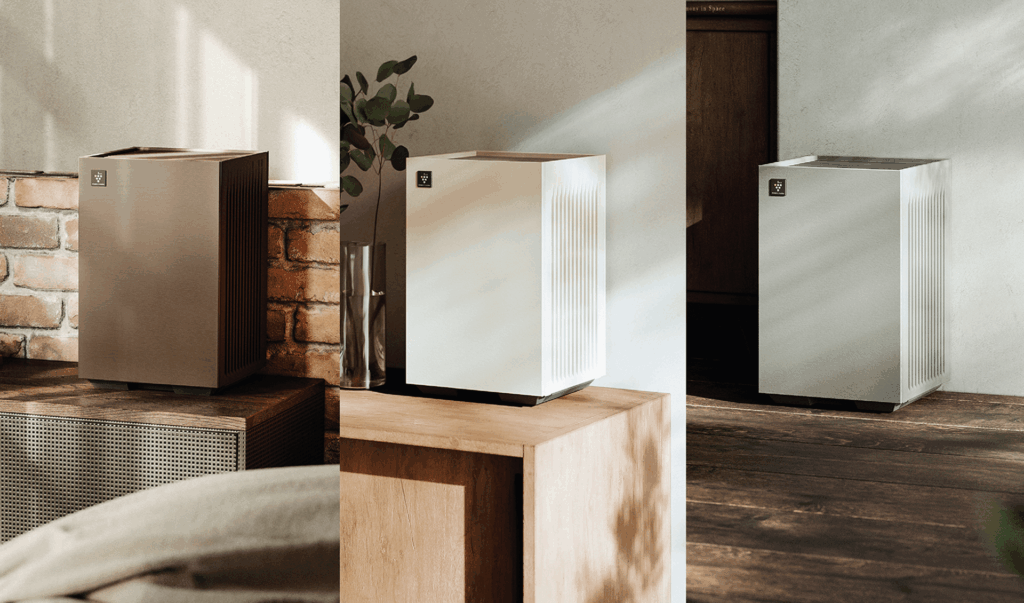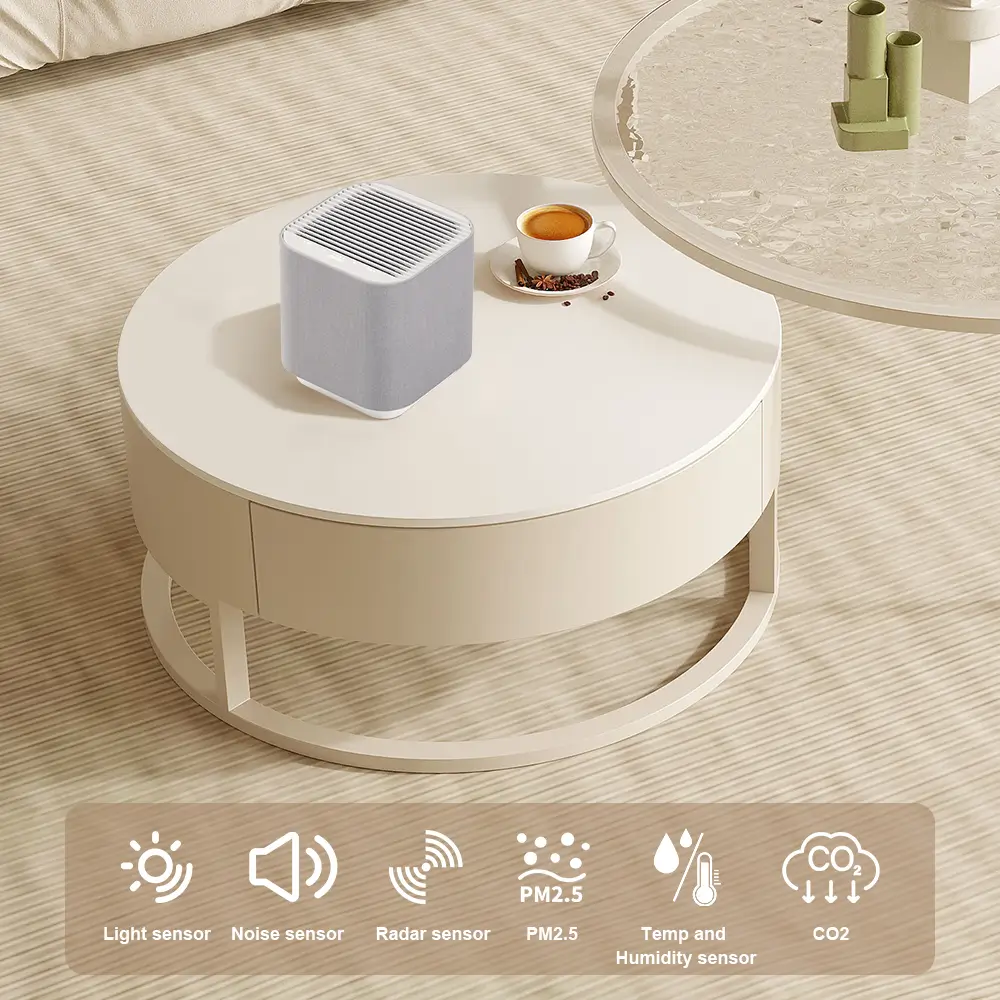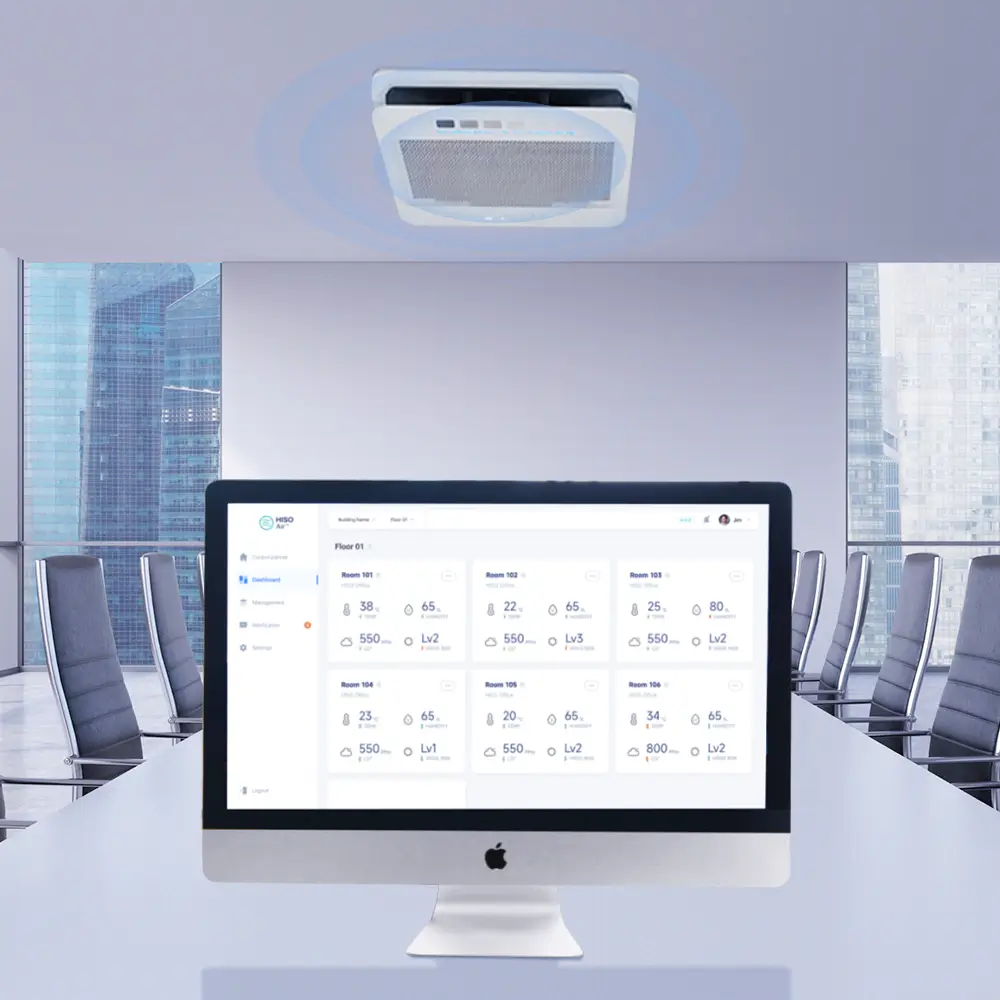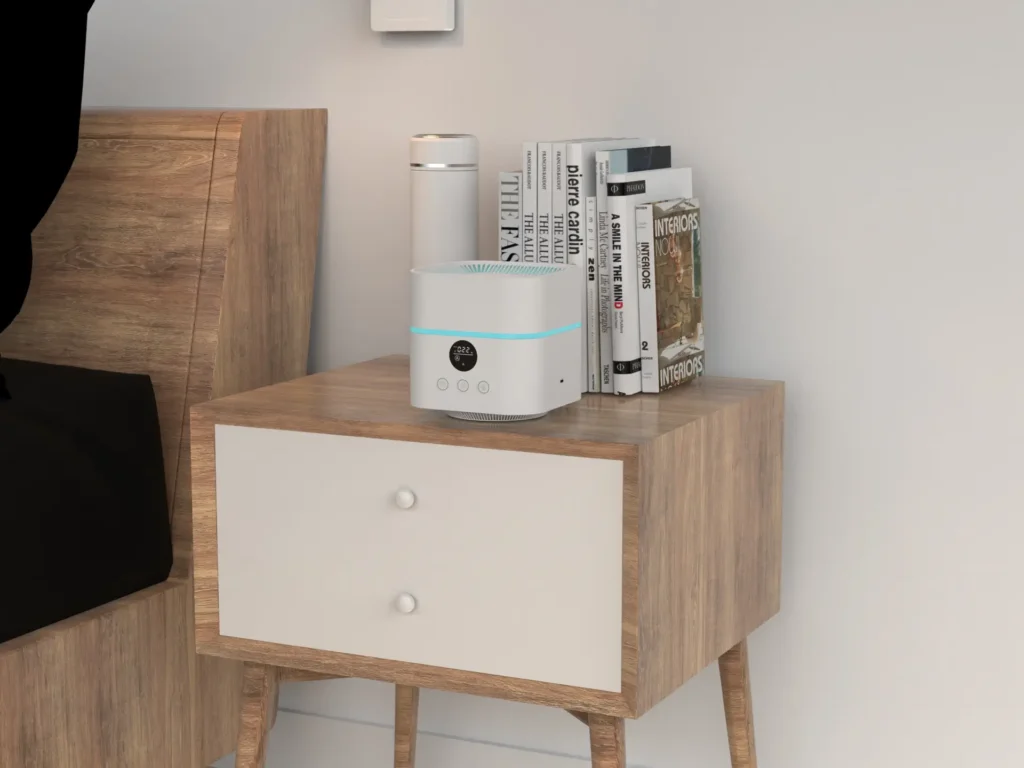Un machine de désinfection de l'air est ce dont vous avez probablement besoin si vous êtes propriétaire d'un restaurant, d'une entreprise ou si vous travaillez dans le secteur de la santé. Comment un stérilisateur d'air vous protège-t-il de Covid-19 et favorise-t-il un air intérieur plus sain ? Il y a plus qu'il n'y paraît, alors continuez à lire !
Les experts affirment que le Covid-19 se transmet principalement de personne à personne. Mais peut-il également se transmettre par voie aérienne ?
La réponse est oui. Des preuves de plus en plus nombreuses montrent que le virus peut survivre dans l'air jusqu'à 3 heures. Si une personne l'inhale, elle peut pénétrer dans ses poumons et s'infecter.
En outre, nous savons que les gouttelettes et les aérosols infectés provenant de la toux, des conversations et des éternuements peuvent contribuer à la propagation de la maladie. Les aérosols peuvent transporter le virus de l'air vers le nez ou la bouche.
Quelle est l'utilité d'un appareil de désinfection de l'air en cas de pandémie ?
Les experts ne s'accordent pas non plus sur la manière dont il se propage réellement dans l'air, nous savons que l'assainissement de l'air intérieur contribue grandement à protéger les personnes contre la transmission par voie aérienne.
En outre, le SRAS-CoV-2 peut se propager rapidement et avoir des répercussions importantes sur les lieux publics et les établissements médicaux.
Il est donc pratique d'obtenir un Système de désinfection de l'air par UV ou machine de désinfection de l'air pour purifier l'air infecté avant qu'il n'atteigne les personnes. Ces purificateurs d'air spécialisés, lorsqu'ils sont utilisés de manière appropriée, peuvent contribuer à protéger vos clients et leur famille des infections qui peuvent se produire à l'intérieur.
La FDA estime également que les purificateurs d'air à UV peuvent contribuer à la lutte contre les infections et à l'atténuation des effets sur les communautés, dans l'intérêt de la santé et de la sécurité publiques.
Qu'est-ce qu'un appareil de désinfection de l'air intelligent ?
Un appareil de désinfection de l'air est doté de plusieurs caractéristiques qui permettent à la fois de piéger les allergènes présents dans l'air et de le désinfecter. Par désinfection de l'air, on entend l'élimination des micro-organismes pathogènes qui provoquent des maladies et des irritations pulmonaires chez les personnes.
Certaines machines spécialisées dans la désinfection de l'air, telles qu'un machine à stériliser l'airLe système de contrôle de la qualité de l'eau, peut même tuer des contaminants ou des bactéries sporadiques.
D'autres noms associés ou ayant le même but que les machines de désinfection de l'air sont :
- Machine d'assainissement de l'air par UV
- Purificateur d'air UV
- Purificateur d'air à ions négatifs
- Purificateur d'air de qualité médicale
- Machine à air frais
- Purificateur d'air à générateur d'ozone
- Filtre à air HEPA
- Et bien d'autres encore
Comment fonctionne un appareil de désinfection de l'air ?
Un appareil de désinfection de l'air piège 99,97% virus et saletés de l'air pollué et utilise une lumière UV-C (lumière ultraviolette) de courte longueur d'onde pour tuer les agents pathogènes. La lumière ultraviolette qui traverse le filtre HEPA H13 détruit les micro-organismes en perturbant leurs fonctions cellulaires. L'air est ainsi purifié et respirable.
Composants d'un appareil de désinfection de l'air intérieur
Désinfection de l'air par UV implique une variété de filtres et de composants dans un appareil de désinfection de l'air. Plus précisément, les stérilisateurs d'air comportent plusieurs filtres spéciaux par rapport à un purificateur d'air portable.

1. Préfiltre
Ce filtre est le premier élément de l'appareil de désinfection de l'air. Il capture les grosses particules, de sorte que la plupart d'entre elles n'atteignent pas le filtre secondaire. Il peut s'agir d'un filtre jetable ou lavable. Les grosses particules telles que les poils d'animaux, la poussière et le pollen en sont des exemples.
2. Filtre à plasma
Les Filtre à plasma est un filtre haute performance utilisé dans les hôpitaux et les établissements de santé pour capturer les agents pathogènes et purifier l'air.
3. Filtre à charbon actif
Le filtre à charbon actif est une couche absorbante qui capture les mauvaises odeurs, le smog, les composés organiques volatils (COV), les produits chimiques et la fumée. Il peut également éliminer les produits chimiques présents dans l'air qui causent des problèmes de santé, tels que le formaldéhyde, le toluène et l'acétone.
4. Filtre HEPA de qualité médicale H13
Le filtre HEPA H13 peut bloquer 99,95% de particules de taille de pénétration maximale (MPPS), idéalement utilisé dans les établissements de soins de santé. Ce filtre peut piéger 0,21 micron de virus et de bactéries et est conçu pour être beaucoup plus efficace que le filtre HEPA standard.
5. Filtre photocatalytique
Le filtre photocatalytique est conçu avec une apatite de titane capable de détruire les contaminants organiques et les matières organiques. En outre, le filtre photocatalytique PCO est efficace pour détruire les coronavirus capturés dans un purificateur d'air.
6. Lampe UVC
Un filtre HEPA associé à une lampe UVC peut virtuellement piéger et détruire le coronavirus et d'autres types de bactéries et de virus dans l'air. La lampe LED UVC est efficace pour neutraliser les activités microbiennes de ces virus et les éliminer complètement de l'air.
7. Ions négatifs
Des ions négatifs sont libérés dans l'air pour le purifier. Les appareils de désinfection de l'air par ions négatifs sont souvent confondus avec les générateurs d'ozone pour la désinfection de l'air. Ce dernier émet de l'ozone qui est mauvais pour la santé, alors que les purificateurs d'air à ions négatifs chargent simplement les particules par attraction électrostatique. Les particules sont alors attirées et tombent sur les plaques conductrices du purificateur d'air.
Où utiliser les appareils de désinfection de l'air
- Protection supplémentaire des travailleurs en dehors des EPI
- Protection contre l'exposition des clients et des consommateurs
- Protection des travailleurs de la santé et des patients
- Protection contre les fumées, les émanations et les produits chimiques de l'industrie
- Protection contre les odeurs excessives des animaux domestiques
Quelles sont les caractéristiques à prendre en compte ?
Lorsque vous choisissez un appareil d'assainissement de l'air, vous pouvez également rechercher certaines de ces caractéristiques :
- Utilisation de l'énergie
- Niveau sonore
- Garantie
- Réputation du fabricant
- Étiquetage
Consommation électrique
Les stérilisateurs à air étant destinés à fonctionner 24 heures sur 24 et 7 jours sur 7, ils doivent consommer moins d'énergie afin de minimiser leur impact sur les factures d'électricité. La plupart des Home Stérilisateurs d'air UV ont une puissance de 40 à 200 watts. En outre, choisissez un appareil qui a reçu la certification Energy Star. Celle-ci indique l'efficacité énergétique de l'appareil par rapport à d'autres modèles de même taille.
Vous pouvez économiser davantage en faisant fonctionner vos machines à des vitesses inférieures lorsque vous quittez la maison. Pour les grandes installations, vous pouvez opter pour des appareils de désinfection de l'air intelligents qui régulent automatiquement la vitesse en fonction de la qualité de l'air filtré.
Niveau de bruit (décibels)
En ce qui concerne le côté pratique, vous devriez en savoir plus sur le niveau sonore du stérilisateur à air. La plupart des stérilisateurs à air sont annoncés comme étant silencieux, mais testez le niveau sonore lorsque vous augmentez la vitesse du ventilateur, car le niveau sonore augmente également.
Un stérilisateur à air classique contient jusqu'à 5 modes de ventilation (silencieux, faible, moyen, élevé, turbo)qui peut être réglé automatiquement ou manuellement. Lorsque vous le faites fonctionner en mode automatique, le ventilateur se régule en fonction de la qualité de l'air.
Le niveau sonore d'un stérilisateur à air est proche du ronflement d'un réfrigérateur, qui est de l'ordre de 20 à 60 décibels. Si le bruit vous dérange toujours, choisissez un purificateur d'air doté d'une option "Mode silencieux" ou "Mode nuit". De même, au lieu d'utiliser des purificateurs avec des filtres mécaniques, vous pouvez choisir purificateurs d'air à ions négatifsqui n'utilisent pas de ventilateurs et fonctionnent donc plus silencieusement.
Pour éviter que votre purificateur d'air ne soit constamment bruyant, veillez à choisir un purificateur d'air dont la taille est adaptée à votre pièce. S'il n'est pas dimensionné correctement, vous risquez de faire fonctionner votre appareil en mode turbo plus souvent. Si le bruit est une préoccupation majeure, choisissez un appareil de stérilisation de l'air de taille correcte, voire d'une capacité supérieure à celle dont vous avez besoin.
Garantie
Examinez la garantie avant de faire un achat. Vous pouvez vous adresser aux représentants des ventes et du service clientèle pour obtenir des explications détaillées sur la garantie de votre machine et de ses pièces. Cela vous permettra de vous assurer qu'en cas de dysfonctionnement de votre machine, le remplacement, la réparation ou le remboursement ne posera pas de problème.
Fabricant
Il existe de nombreux marques qui sont des purificateurs d'air de qualité médicale, jouissant d'une bonne réputation sur le marché. En voici quelques-uns, mais cette liste n'est pas exhaustive :
- IQAir
- L'air du lapin
- Blueair
- GermGuardian
- Levoit
- HisoAir
- etc.
Il s'agit de l'une des meilleures options sur le marché actuellement. Ces entreprises sont présentes dans le secteur depuis de nombreuses années. En outre, vous devez non seulement examiner la société, mais aussi les modèles pour vous assurer qu'ils conviennent à votre maison.
Pour les OEM/ODM, ils peuvent également être une source fiable de machines, mais il faut s'assurer que ces fabricants présentent des rapports d'essais HEPA et des certificats de vérification.
Il convient de prendre contact avec le fabricant si vous souhaitez acheter un produit auprès d'un distributeur. fabricant de purificateurs d'air en Chine. Vous pouvez demander les rapports d'essai, la conformité du produit et même des photos et des vidéos du produit en fonctionnement ainsi que de l'usine.
Étiquetage
La FDA recommande que les purificateurs d'air soient étiquetés de manière à aider les consommateurs à comprendre l'utilisation de l'appareil, en particulier pendant la pandémie de coronavirus. Elle recommande une description claire des performances de l'appareil, à savoir sa zone maximale de fonctionnement, sa durée de vie opérationnelle.
En outre, la FDA recommande également un avertissement clair concernant les risques et les dangers, tels que l'exposition aux UV pour les stérilisateurs d'air à UV. Une procédure complète doit également être mise à la disposition des clients en termes de fonctionnement.
Conclusion
Lorsqu'ils sont utilisés correctement, les appareils de désinfection de l'air peuvent empêcher les contaminants en suspension dans l'air de peupler votre maison, votre entreprise ou votre hôpital. Il convient de noter que les purificateurs d'air ne suffisent pas à protéger les personnes contre le Covid-19. L'utilisation d'appareils de désinfection de l'air avec un éloignement approprié, un lavage des mains et une désinfection adéquats, permet de mieux protéger tout le monde.
Si vous recherchez des machines de désinfection de l'air de premier ordre, HisoAir a ce qu'il vous faut. Nous fabriquons plusieurs types de systèmes de stérilisation de l'air, de filtration par lumière UV et de technologies pour garantir la protection de votre établissement contre Covid-19.


